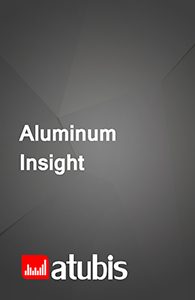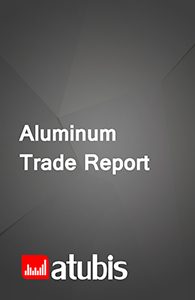Oman’s Aluminum Scrap and Waste Market Outlook Report
9,743€
- TRY: 475,000 ₺
The low energy consumption required for recycling aluminum makes the process important. The energy required to recycle aluminum is about 4-5% of the energy that is needed to produce the light-weight metal from bauxite. Thus, recycling aluminum will result in 95% energy saving. Aluminum scrap and waste fall into two general categories: new and old scrap. New scrap is metal that is left over during the production of finished products or semis. Old scrap, on the other hand, is metal from end-of-life goods. Aluminum scrap can be used by producers with melting capacities.
Product Description
With a per-capita GDP of $32,400 in 2019, Oman was the fifth largest economy in the region that year, behind Qatar, the United Arab Emirates, Bahrain, and Saudi Arabia. The country’s economy has steadily grown over the past years, and according to the Oman Vision 2040, economic growth is expected to continue over the coming years. The country’s logistical location that connects the Gulf Cooperation Council (GCC) countries to the world is one of the major factors in expanding its relations and trade with other countries; the free trade agreement with the US since 2009 is one example. Oil and petrochemicals account for a major portion of the country’s exports. In 2019, about 70% of the country’s total export revenues came from oil and oil-related products. Iron and steel as well as organic chemicals are also major contributors to the country’s total exports. The aluminum industry has moved up to the fifth place in the country’s exports and has had significant growth and development in downstream capacities over the recent years. As a result, both supply and consumption of aluminum scrap (especially new scrap) have increased.
Market drivers of aluminum scrap and waste
As a secondary source of raw material for downstream plants, aluminum scrap is always priced lower than primary aluminum. The lower production costs as a result of the price spread between primary and secondary aluminum make scrap more attractive to producers. However, since scrap is produced abundantly in Oman, the low premium weighs down on the drive towards scrap consumption. Moreover, using scrap from similar products with similar alloy content reduces the need for alloying. This will in turn significantly reduce the consumption of alloying elements, which can further improve aluminum scrap consumption.
The most important factor that limits scrap consumption is the impurities that can lead to lower-quality products. This puts pressure on scrap consumption or restricts it to applications where the chemical composition is not crucial. With the increasing demand growth for higher-quality products, demand growth for scrap will be under further pressure.
The development of downstream sectors in the aluminum industry, as the major determiners of demand and the largest consumers of scrap, further drives aluminum scrap consumption in the country over the coming years. However, as the majority of downstream aluminum plants are located near the Sohar smelter and have abundant access to molten aluminum, producers that are not located near the smelter will be the main contributors to demand growth. This will slow down demand growth.
Overview of Oman’s aluminum scrap and waste market
Since primary molten aluminum is easily available to the largest downstream aluminum operations in Oman, demand for scrap has weakened. Moreover, higher downstream output has resulted in increased scrap supply, pushing scrap exports higher. Thus, with the further decline of global aluminum prices, Oman’s scrap consumption weakened, leading to increased exports. The country’s recycling input rate is assessed to be about 22% over the recent years, below the first half of the 2010s. As downstream sectors are developed over the coming years, the rate is expected to steadily grow, finally resulting in decreased net exports. However, the country is still expected to remain a net exporter.
Breakdown of Oman’s aluminum scrap and waste market
Domestic aluminum waste and scrap supply (both new and old, separately) in the forecast timeframe as well as the previous period has been broken down using three factors. The first factor breaks down the market into three categories based on alloy material: commercially pure aluminum, heat-treatable alloys, and non-heat-treatable alloys. Past and future trends for each type of material have been analyzed. Heat-treatable scrap holds the largest share of the market. In the second breakdown, products are distinguished based on product type: lithographic sheet, used beverage cans, wires and cables, radiators, extrusions, pots and pans, engine pistons, other cast auto parts, tiles and dampa, boring and turning, and other products. The domestic aluminum waste and scrap market has also been broken down into soft and hard scrap over the timeframe; hard scrap holds the main share of the market. Finally, using the third factor, aluminum scrap is categorized based on the type of consumers. Secondary smelters are the largest consumers of aluminum scrap.
Key players in Oman’s aluminum casting parts market:
- Omani Indian Co. for Aluminum Recycling LLC
Additional Information
| Industry | Aluminium Scrap |
|---|---|
| Region | Oman |
| Report Type | Industry Report |
Specifications
| Report Attribute | Details |
| The base year for estimation | 2021 |
| Historical data | 2011-2020 |
| Forecast period | 2021-2026 |
| Quantitative units | Value in USD and Volume in Tonne |
| Report coverage | Market Overview, Dynamics, Market Outlook, Risks to Forecast, Consumer Market, Industry Overview, Market Landscape, Competitive Landscape, Market Attractiveness, External Macro Environment Analysis |
| Segments covered | Source, Composition, Type, Application |
| Pricing and purchase options | Please explore our purchase options to meet your exact research needs. |
Reasons to Buy
- Recognize the geographical distribution of import demand
- Identify the current and future key players of the trading market
- Achieve a better insight on potential target markets
- Understand the behavior of major suppliers/customers either globally or regionally
- Identify competitors as a feed for market analysis
Table of Content
- Executive summary
- Introduction
- Objective
- Market under study
- Supply Market
- Specifications
- Consumption structure
- Applications
- Physical properties
- Subjects discussed
- Geographical scope under study
- Study timeframe
- Study currency
- Potential audience
- Market dynamics
- Market drivers
- Restraints
- Opportunities
- Challenges
- Market overview
- Market size
- Supply
- Supply trends
- Efficiency rates
- Consumption
- Consumption trend
- Consumption Share of domestic product
- Trade
- Exports
- Imports
- Trade balance
- Market balance
- Market breakdown by application
- Inventory
- Supplier inventory
- Consumers inventory
- Market outlook
- Market factors
- Costs and prices
- Competition
- The government
- Other factors
- Future scenarios
- Risks to forecast
- Market factors
- Consumer markets
- Direct consumer markets
- Capacity of Consumer Market
- Consumer Market Operation
- Trade of Consumer Market Products
- Consumer Market Factors
- Forecast of Consumer Market
- Direct consumer markets
- Export potentials
- Destinations
- Trade and insurance costs
- Import market suppliers
- Producers potential share
- Destinations
- Available EOL Scrap
- Market landscape
- Domestic sales markets
- Pricing in the domestic market
- Potential domestic demand
- Trade agreements for imports
- Foreign suppliers
- Foreign sales market
- Prices
- Potential markets overview
- Trade agreements for exports
- Foreign customers
- Domestic sales markets
- Competitive landscape
- Consumers
- Company profile
- Revenue structure
- Gross profit margins
- Capacity, Supply and sales
- Consumers
- Market attractiveness
- Industry rivalry
- Threat of new entrants
- Threat of substitutes
- Bargaining power of buyers
- Bargaining power of suppliers
- Conclusion of Porter analysis
- PESTEL analysis
- Political factors
- Economic factors
- Social factors
- Technology factors
- Environmental factors
- Legal factors
- SWOT analysis
- Short-term strategies
- Long-term strategies
List of Figures
- Supply and consumption; 2011-2021
- Market share of product applications; 2021
- Market surplus; 2021-2026
- Process flowchart
- Market size; 2011-2026
- Amount of supply; 2011-2026
- Efficiency rate; 2011-2026
- Amount of consumption; 2011-2026
- Consumption share of domestic product; 2011-2026
- Exports of product; 2011-2021
- Imports of product; 2011-2021
- Historical trade balance; 2011-2021
- Future Market balance; 2021-2026
- Market consumption breakdown by application; 2011-2026
- Inventories of suppliers; 2011-2021
- Consumers’ inventory of product; 2011-2021
- Production forecast, according to supply and sales analysis; 2021-2026
- Market surplus; 2021-2026
- The share of end-user industries in the consumption; 2011 and 2021
- Changes in the end-consumption of products; 2021 vs 2026
- Capacity distribution structure of direct consumers; 2021
- Existing capacities of direct consumers in each province; 2021
- Suppliers of the export potential destination; 2021
- Historical exports to the export potential destination and future potential; 2016-2026
- Sales channels
- Realized price of the product in the market; 2011-2026
- Potential demand of each province; 2021
- The main foreign suppliers to the market; 2011-2021
- FOB price vs domestic market; 2011-2026
- Map of global major importers > 20,000t; 2021
- Major foreign customers; 2011-2021
- Revenue structure of the consumers; FY2021
- Sales income and gross profit margin of the consumers; FY2011-2021
- Supply and sales of the consumers; FY2011-2021
- SWOT matrix
- Strategies positioning



